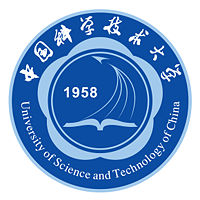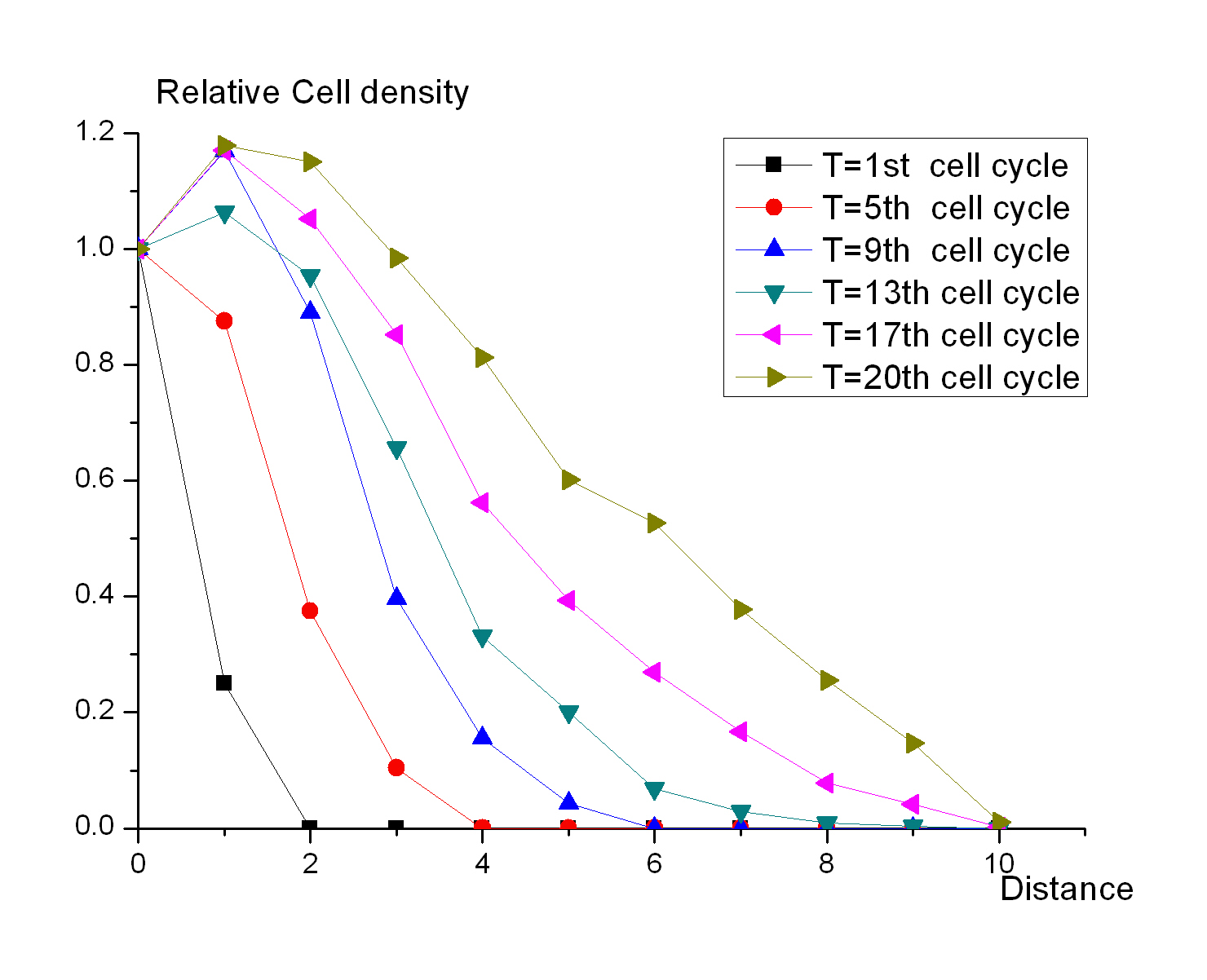Team:USTC/Component
From 2008.igem.org
| Line 28: | Line 28: | ||
<br><br><br> | <br><br><br> | ||
| - | |||
==Differetiate Component== | ==Differetiate Component== | ||
| + | <br> | ||
We design a time-dependent gene regulation system to construct a self-organized system. The RhlL/RhlR system is employed to report the cell-population density. The sender cell will appear first when the density reaches a certain level. And it will tell other cells around it to be the receiver cells by sending the ligands to environment. After receiving the ligands, the Cre recombinase will be expressed to eliminate the function of sending ligands. In this way, a positional differentiation will be done. | We design a time-dependent gene regulation system to construct a self-organized system. The RhlL/RhlR system is employed to report the cell-population density. The sender cell will appear first when the density reaches a certain level. And it will tell other cells around it to be the receiver cells by sending the ligands to environment. After receiving the ligands, the Cre recombinase will be expressed to eliminate the function of sending ligands. In this way, a positional differentiation will be done. | ||
| + | <br> | ||
===The cell density of the colony on the plate=== | ===The cell density of the colony on the plate=== | ||
[[Image:USTC_cell_density.jpg|right|thumb|200px|Fig 1 .The changes of cell relative density related to the distance at different time points]] | [[Image:USTC_cell_density.jpg|right|thumb|200px|Fig 1 .The changes of cell relative density related to the distance at different time points]] | ||
| - | + | <br> | |
| - | Cell Automata is employed to mimic the states of a colony growing on the plate. The first seed is placed on the center of the table. Each seed has a child in the next generation, and the child seed is randomly putted into the grid next to its parent. It is the simplest simulation, but it can suggest how the bacteria grow on the plate when the resources are affluent. Fig 1 shows the changes of cell relative density related to the distance at different time points.And the result shows that 1) the colony can be divided into two parts, the central region and the peripheral region, according to the density of cells; 2) the central region will expand during the growth of the colony; 3) the | + | Cell Automata is employed to mimic the states of a colony growing on the plate. The first seed is placed on the center of the table. Each seed has a child in the next generation, and the child seed is randomly putted into the grid next to its parent. It is the simplest simulation, but it can suggest how the bacteria grow on the plate when the resources are affluent. Fig 1 shows the changes of cell relative density related to the distance at different time points.And the result shows that 1) the colony can be divided into two parts, the central region and the peripheral region, according to the density of cells; 2) the central region will expand during the growth of the colony; 3) the difference between the peripheral region and the central region is evident enough to be sensed by the concentration of signal molecules. |
| - | <br> | + | <br> |
| + | ===Quorum Sensing System=== | ||
| + | RhlI/RhlR, one type of quorum sensing systems, is employed as messengers to inform the cell of the local environment where it lives. RhlI is the enzyme that catalyzes the synthesis of C4HSL and RhlR is the receptor of C4HSL. If the concentration of C4HSL reaches a certain level, the RhlR will elevate the expression level of downstream genes of RhlR promoter to a great extent. It marks the initiation of differentiation. There are three genes downstream: RhlI, LuxI and LacI. RhlI can upregulate the expression of downstream genes by forming a positive feedback system. The LuxI gene is transcribed to synthesize the signal molecule AHL, sending the differentiation order to other cells. However, LacI acts against AHL inhibiting the expression of differentiation executor. | ||
| + | In order to build the system, we have designed and constructed several protein-coding units | ||
| + | as follows: | ||
| + | ====:::::1. K082035==== | ||
| + | In this sequence, we ligated the ptetR, RBS, RhlI, terminator together, so as to produce the C4HSL constitutively. The sequencing results and the electrophoresis both demonstrate that the sequence of the unit is correct. Moreover, although it is too difficult for us to directly test whether RhlI can generate C4HSL as we wish as we could not obtain the purified C4HSL molecule, we constructed another sequence comprised by ptetR, RBS, RhlI, RBS, GFP and terminator. The green fluorescence we have observed confirmed the normal expression of RhlI indirectly. We have designed and constructed several protein-coding units。. | ||
| + | |||
| + | ==== 2. K082021==== | ||
| + | The sequence codes for RhlR protein and the protein is constitutively expressed. | ||
| + | |||
| + | ==== 3. K082020==== | ||
| + | Similarly, the sequence expresses the Lux R protein constitutively. | ||
| + | |||
| + | ==== 4. K082045==== | ||
| + | This is the initiation part of differentiation in our project. The sequence codes for RhlI, LacI and LuxI and expresses them at a high level only when there are both RhlR and C4-HSL present. In our design, we hope the concentration of C4-HSL increases to a certain amount but not too much, so a weaker RBS is used. Moreover, the proteins Lac repressor and AHL are also generated. | ||
| + | |||
| + | |||
== Report Component== | == Report Component== | ||
asdfasdfasdf | asdfasdfasdf | ||
Revision as of 14:37, 28 October 2008
| Home | The Team | The Project | Components | Parts Submitted to the Registry | Notebook |
|---|
Contents |
Differetiate Component
We design a time-dependent gene regulation system to construct a self-organized system. The RhlL/RhlR system is employed to report the cell-population density. The sender cell will appear first when the density reaches a certain level. And it will tell other cells around it to be the receiver cells by sending the ligands to environment. After receiving the ligands, the Cre recombinase will be expressed to eliminate the function of sending ligands. In this way, a positional differentiation will be done.
The cell density of the colony on the plate
Cell Automata is employed to mimic the states of a colony growing on the plate. The first seed is placed on the center of the table. Each seed has a child in the next generation, and the child seed is randomly putted into the grid next to its parent. It is the simplest simulation, but it can suggest how the bacteria grow on the plate when the resources are affluent. Fig 1 shows the changes of cell relative density related to the distance at different time points.And the result shows that 1) the colony can be divided into two parts, the central region and the peripheral region, according to the density of cells; 2) the central region will expand during the growth of the colony; 3) the difference between the peripheral region and the central region is evident enough to be sensed by the concentration of signal molecules.
Quorum Sensing System
RhlI/RhlR, one type of quorum sensing systems, is employed as messengers to inform the cell of the local environment where it lives. RhlI is the enzyme that catalyzes the synthesis of C4HSL and RhlR is the receptor of C4HSL. If the concentration of C4HSL reaches a certain level, the RhlR will elevate the expression level of downstream genes of RhlR promoter to a great extent. It marks the initiation of differentiation. There are three genes downstream: RhlI, LuxI and LacI. RhlI can upregulate the expression of downstream genes by forming a positive feedback system. The LuxI gene is transcribed to synthesize the signal molecule AHL, sending the differentiation order to other cells. However, LacI acts against AHL inhibiting the expression of differentiation executor. In order to build the system, we have designed and constructed several protein-coding units as follows:
:::::1. K082035
In this sequence, we ligated the ptetR, RBS, RhlI, terminator together, so as to produce the C4HSL constitutively. The sequencing results and the electrophoresis both demonstrate that the sequence of the unit is correct. Moreover, although it is too difficult for us to directly test whether RhlI can generate C4HSL as we wish as we could not obtain the purified C4HSL molecule, we constructed another sequence comprised by ptetR, RBS, RhlI, RBS, GFP and terminator. The green fluorescence we have observed confirmed the normal expression of RhlI indirectly. We have designed and constructed several protein-coding units。.
2. K082021
The sequence codes for RhlR protein and the protein is constitutively expressed.
3. K082020
Similarly, the sequence expresses the Lux R protein constitutively.
4. K082045
This is the initiation part of differentiation in our project. The sequence codes for RhlI, LacI and LuxI and expresses them at a high level only when there are both RhlR and C4-HSL present. In our design, we hope the concentration of C4-HSL increases to a certain amount but not too much, so a weaker RBS is used. Moreover, the proteins Lac repressor and AHL are also generated.
Report Component
asdfasdfasdf
 "
"


